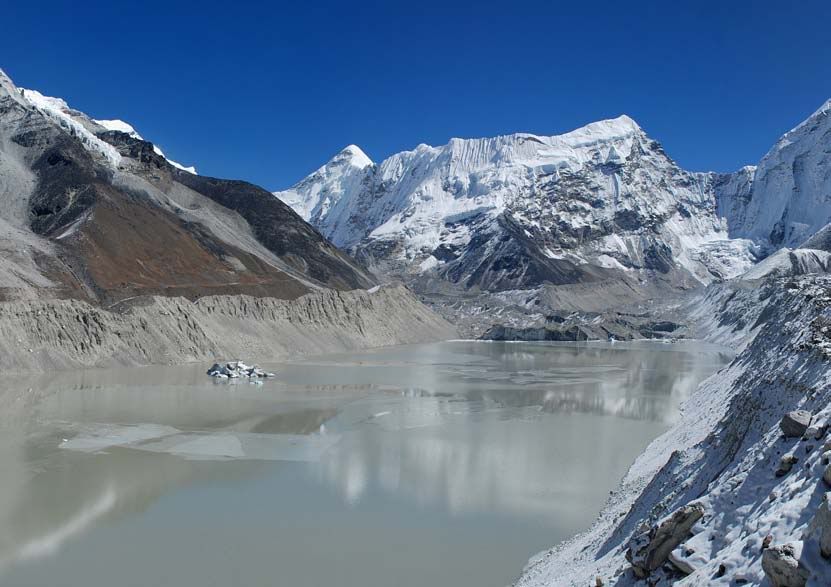
(Himalaya Snow)
The Alarming challenge of growing temperature affects the general lives of all human beings all over the world, as the ‘Third Pole’. As Nepal has a biodiversity in various facts as follows: The Himalayas and its burning climatic concerns drew world attention at the latest round, as the Katmandu headquartered International Centre for Integrated Mountain Development (ICIMOD) released reports pointing at the dire consequences of the impact of climate change on the highest elevations on the earth. The reports said that warming of the Himalayas will limit the water storage capacity of the vast expanse of the snow and ice mass, heightening the risks of glacial lake outburst floods (GLOF).
As warming increases, tree line and animal species move to higher elevations. Strange things are happening in the mountains - mosquitoes have appeared in places where they could never be found in the past. People have reported to have spotted cobra in mid hills while some trekkers were surprised to sight flies in the altitude as high as Everest Base camp, a location at 5,300 meters. The reports said that species already living at highest elevation may have nowhere to go.
However, this change is not evenly distributed. Rate of warming is found to be much greater in the central Himalayas and the Tibetan Plateau. In Lhasa, for example, temperatures were found to have increased by 1.35° Celsius between 1950 and 1980. Mass losses from glaciers and accelerated thinning of the snow cover are expected to reduce water supplies and hydropower potential," said the climate change assessment of the Hindu Kush-Himalaya region extending from Afghanistan to Bhutan.
The Hindu Kush-Himalaya region has been described as one of the hotspots in respect to the global warming and climate change. Temperature rises are observed to be at greater rates at higher altitude and during cooler months than in warmer months and warmer regions. This imbalance will eventually narrow the seasonal variation in temperature. This will turn out to be more favorable for some species while proving hostile to others. As a result, agriculture will be directly impacted, the ICIMOD reports said.Warming across the Himalayan region is higher than the global average of ICIMOD 0.74° Celsius over the past 100 year
Also known as the ‘Third Pole’, the Hindu Kush-Himalaya region harbours 30 per cent of the world’s glaciers. A three year research project led by and funded by Sweden has identified the existence of more than 54,000 glaciers in the region. The project named the ‘Status of Glaciers in the Hindu Kush-Himalayan Region’ covered the Himalayan length of 6,000 kilometres. In the Nepalese Himalaya alone, a total of 3,252 glaciers have been recorded, with 20 falling in the danger list of bursting. However, with increasing warming and resultant ice and snow melt, these glaciers are disappearing slowly. As glaciers vanish, new glacial lakes are born or existing lakes grow in depth and size. There are 2,315 glacial lakes in the Nepalese Himalayan
we substantially deepen our understanding of this region, and of all mountain systems while pointing to the knowledge gaps yet to be filled and actions that must be taken to deal with the challenge of climate change globally and to minimize the risks locally’.
The Hindu Kush-Himalaya region is rich in bio-diversity which is home to 25,000 plant and animal species. It boasts of housing diverse forest types even larger than that of the Amazon. The Himalaya is considered as water tower and 1.3 billion people living the downstream basins depend on these snowy mountains for energy, water supply and irrigation. So, the impact of climate change on the Himalayas is going have broader repercussions in the region. "As it is one of the most ecologically sensitive areas in the world. We must meet the intensity of the climate change in these mountains with equal intensity of willpower to mitigate and to adapt to the impacts. So we have to be very careful with the growing temperature by providing well education about the importance of bio-diversity.










